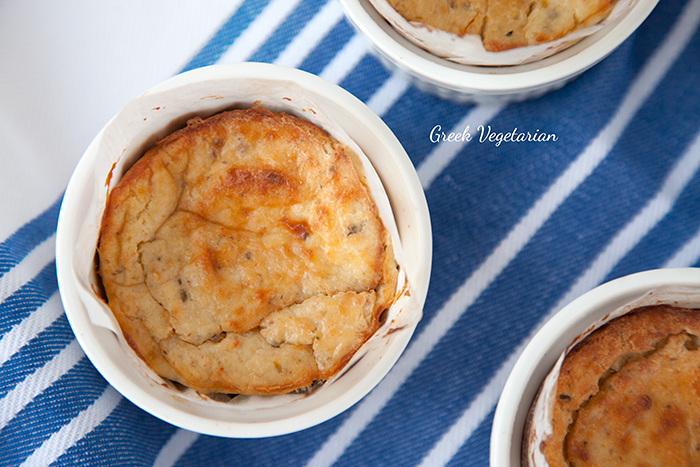Beautiful, tender green beans cooked slowly in a tomato-based sauce is the perfect companion for a wonderfully light but protein-rich serving of Greek baked ricotta. This is my new favourite meal at the moment. I'm absolutely going green bean bananas for it!
Stewed green beans, or Fasolakia, is a delicious winter warmer that can transport you to a place of comfort and happiness :) I've been cooking beans this way for a while but never had I appreciated their amazing accompaniment abilities until I served them up with baked ricotta.
There are so many different types of vegetable stews in Greek cuisine, most of them slow cooked and often served with feta cheese crumbled over the top so it's no surprise that ricotta goes so well with Fasolakia.
Slow cooking Fasolakia sweetens the onion and tomato and tenderises beans. Putting this stew together is easy – it just requires a bit of patience while it's cooking as it needs more than an hour to cook. The upside is that you can make your baked ricotta while the stew is cooking, and the aromas from your kitchen will send you to that comfortable, happy place before you even get to eat the beans!
Perfect as an accompaniment for a Meatless Monday meal, I have no doubt that Fasolakia will win you over. It has that way with people :)
Fasolakia (Green Bean Stew)
Adapted slightly from the recipe for Greek Fresh Green Beans on the Authentic Greek Recipes blog.The recipe for Greek Baked Ricotta can be found here.
Makes 6–8 serves
Ingredients
- 1 kg fresh green beans
- 100ml good quality olive oil
- 2 onions, peeled and grated
- 4 cloves of garlic, minced
- 8 roma tomatoes, peeled and chopped (or one 400g can of peeled, chopped tomatoes)
- 100ml water
- Salt and pepper to taste
- 2 tablespoons fresh parsley, finely chopped
Instructions
- Wash and trim ends from beans. Set aside.
- Heat oil in a large, heavy based pot. Add grated onions and fry over low–medium heat for a few minutes.
- Add the beans and the minced garlic and fry, stirring, for another minute or so.
- Add the tomatoes, water, salt and pepper to taste.
- Cover pot and simmer on very low heat for 1 hour and 20 minutes.
- Add the parsley, increase heat to medium and allow to simmer, uncovered, for around 5 to 10 minutes until any watery liquid has evaporated and all you are left with is a thick, tomatoey sauce.
I'm linking up again with the ever-resourceful Veggie Mama this week, on her Meatless Mondays segment. This week she's been doing a bit of slow-cooking herself.
























